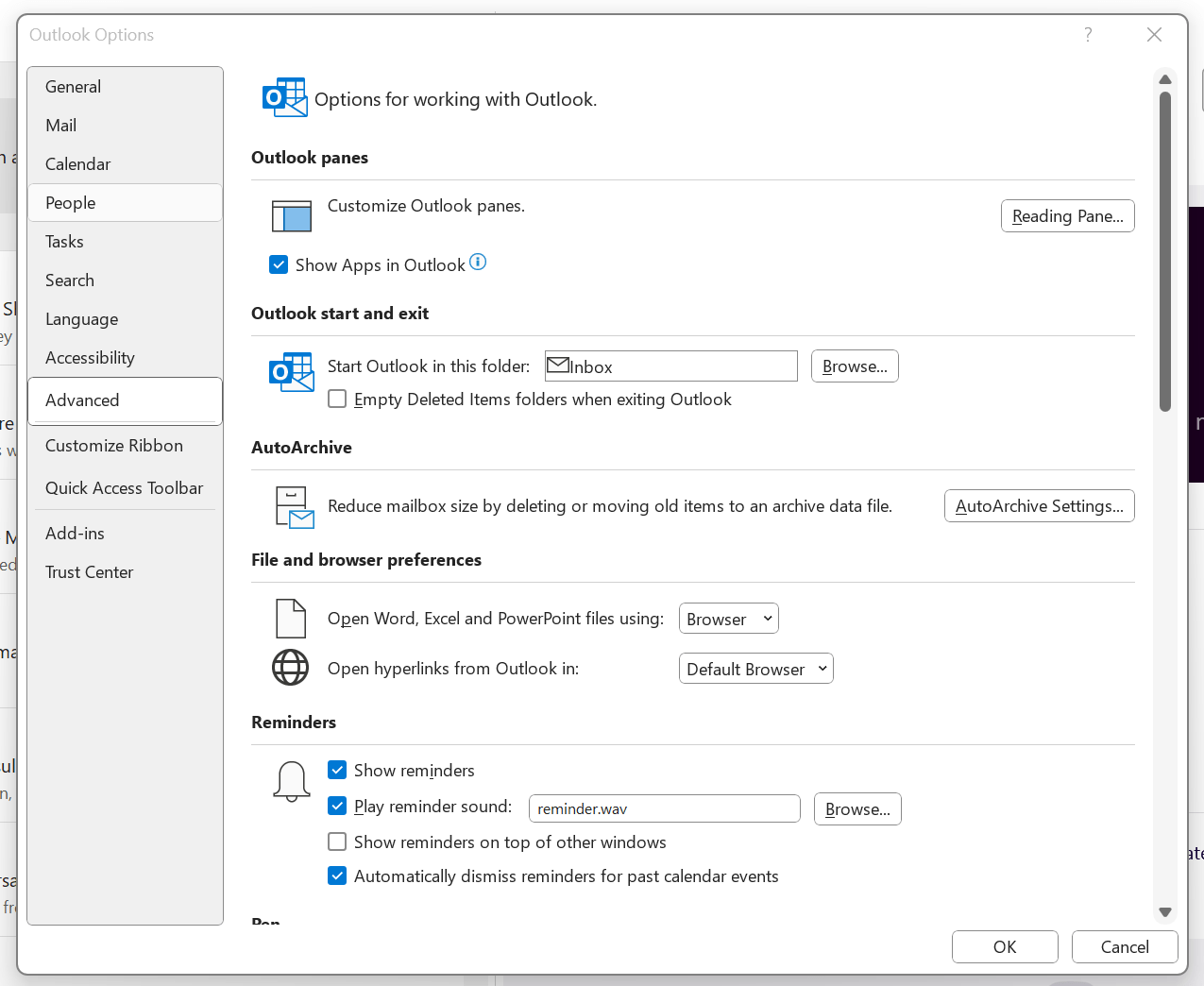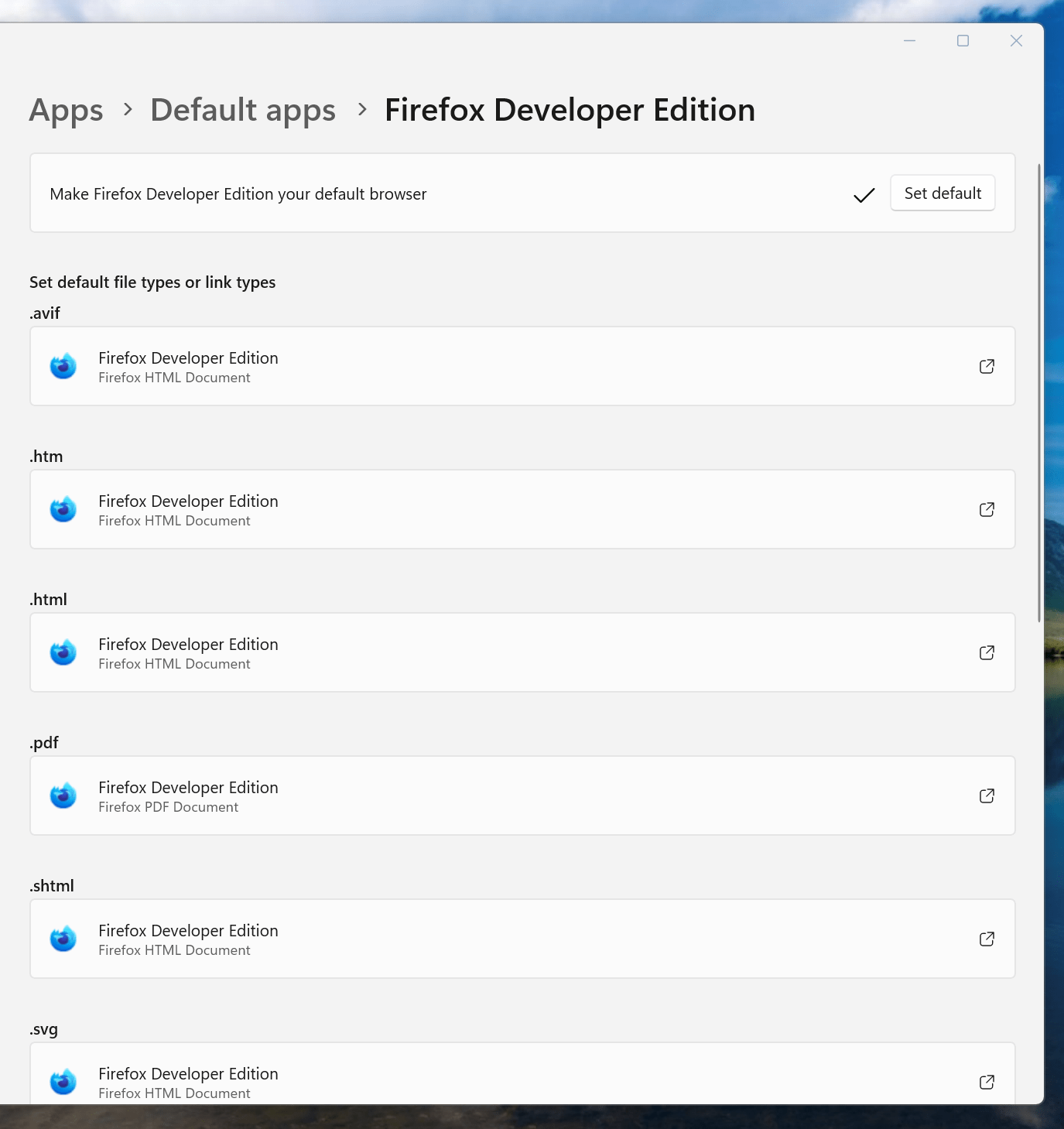TOPIC: MOBILE BROWSER
Get web links from Outlook emails and Teams chats to open in your web browser of choice
12th August 2024By default, web links from either Outlook (here, I am referring to the Classic version and not the newer web appliance version that Microsoft would like us all to use, though many think it to be feature-incomplete) or Teams open in Edge, which may not be everyone's choice of web browser. Many choose Google Chrome, while I mainly use Mozilla Firefox, with Brave being another option that I have.

To get both Outlook and Teams to use your default system web browser, go to Outlook and navigate to File > Options > Advanced > File and browser preferences. Once there, look for the line with Open hyperlinks from Outlook in. The dropdown box will show Microsoft Edge by default, but there is another option: Default Browser. Choosing that will change things away from Edge to your chosen browser, assuming that you have set it by default using the Settings application.

If you have not gone there, navigate to Apps > Default apps. Once there, find the entry for the browser that you want to use and click on the Set default button. You also will see a list of file types, where you may need to change the setting for those as well. Once the system default is sorted, that will be honoured by Outlook and Teams as well.
Exploring the mobile web
16th July 2010With a change of job ahead of me, I decided to make my web usage a little more mobile. The result was the purchase of a Blackberry 8520 Curve on a T-Mobile pay-as-you-go tariff to complement my existing phone. The attraction included mobile email access and some web browsing capability. Though GPRS provides slow web browsing, it works adequately whilst highlighting the value of mobile-optimised websites. It's just as well that this website that you're reading has a mobile version.
Hooking the Blackberry up to GMail was no problem once I had paid my dues and the necessary set up was done for me; it was only then that the required option was available through the set-up screens. While RIM's own web browser may be no slouch when it comes to rendering websites, I put Opera Mini in place as well for those times when the default option could be bettered and they exist too. Speaking of RIM applications, there's one for Twitter too, though I added Übertwitter for the sake of greater flexibility (it can handle more than one account at a time, for example). In addition, I have instated applications for WordPress and LinkedIn too, and it was then that I stopped myself spending too much time in Blackberry App World. If I was of the Facebook persuasion, I might be interested in the default offering for that as well, but I have learnt to contain myself.
Of course, there are limitations to the device's capabilities regarding email and web on the move. Long emails still need desktop access (messages can get truncated) and mobile unfriendly websites will take an age to load and explore; a small screen means much more finger work. After all, this is a small device, so the observations aren't astounding; it's just that I encounter the reality of life on a small screen now. Nevertheless, useful sites like those from Google and the Met Office have a mobile variant, though I'd like to see the latter including its rain radar as part of the package.
Speaking of life on a smaller scale, there's the size of the keyboard to consider too. So far, I haven't had much practice with it, but I am unsure as how some craft longer blog entries with the tiny keys. Then, there's the ever-present threat of arm discomfort and RSI that you have to watch. For that reason, I'll stick with use for an hour at a time rather than going mad altogether. Navigating around the screen using the tiny trackpad is something to which I am adjusting, and it works well enough too, so long as you're not looking through long web pages or emails.
To bring this piece to a close, the new gadget has been finding uses and I don't intend to leave it idle after paying over £150 for it. Apart from acting as an expensive calculator, it has already travelled abroad with me with roaming not being a problem; while I may have failed to make it work with hotel broadband, there was EDGE availability to keep things connected. All in all, the device is earning its keep and teaching me a few things about mobile handheld computing with my main website in process of being made more mobile compatible with the front page and the photo gallery gaining versions for handheld devices after the same was done for the outdoors blog earlier this year (might make the design look more like the rest of the site though). Without something on which to do some real testing, that idea may not have become reality as it is. It may be no desktop substitute, but that's never to say that these devices may never get near that situation. After all, there was a time when no one could imagine the same for laptop PC's, and we all know what has happened to them.